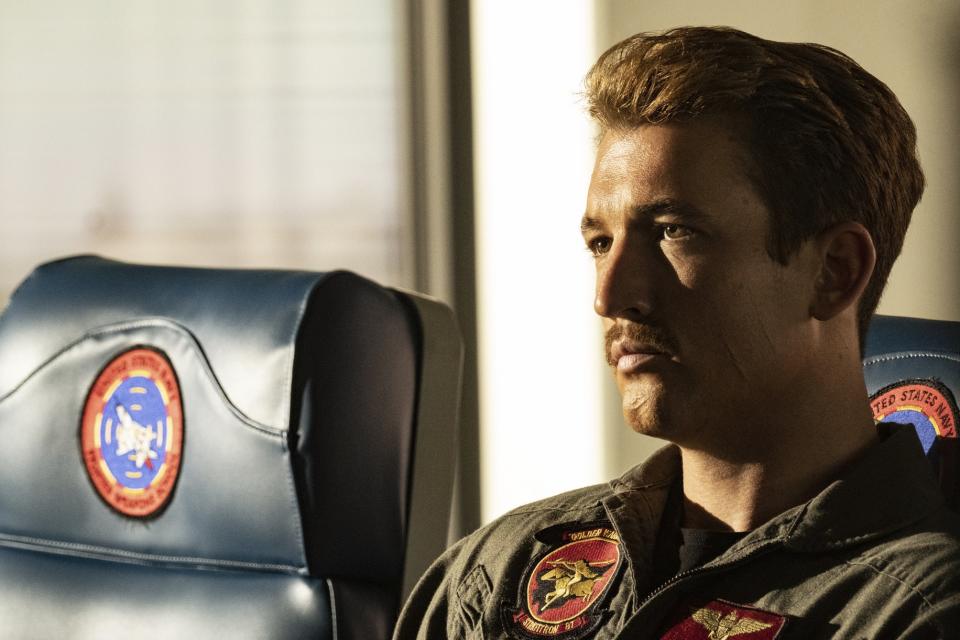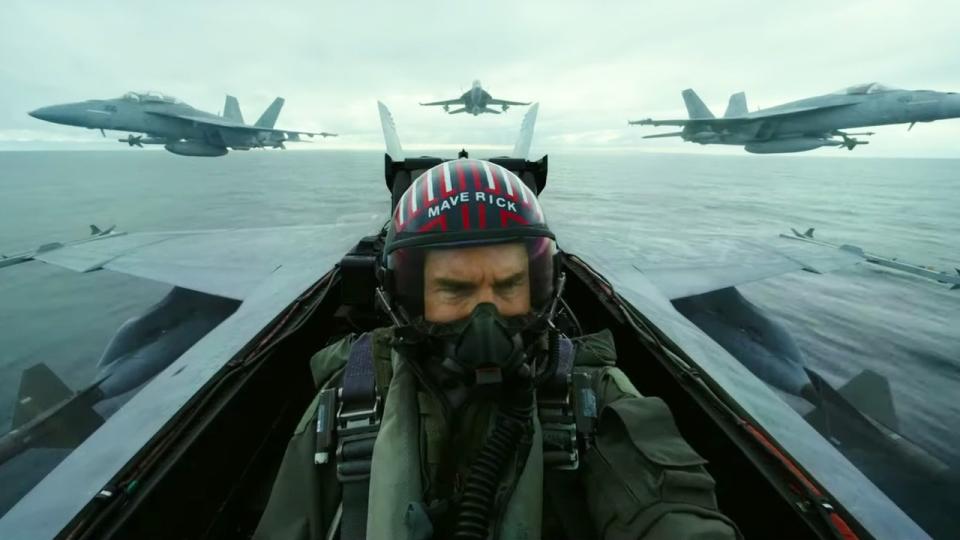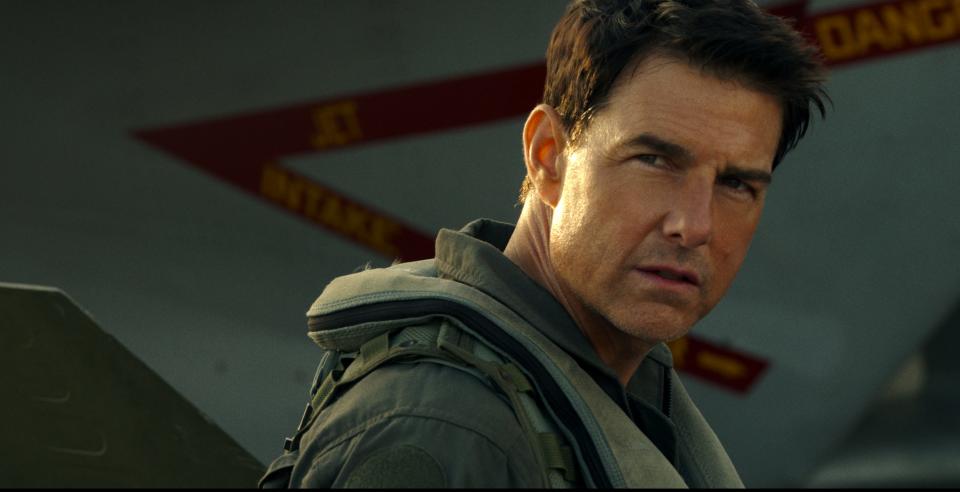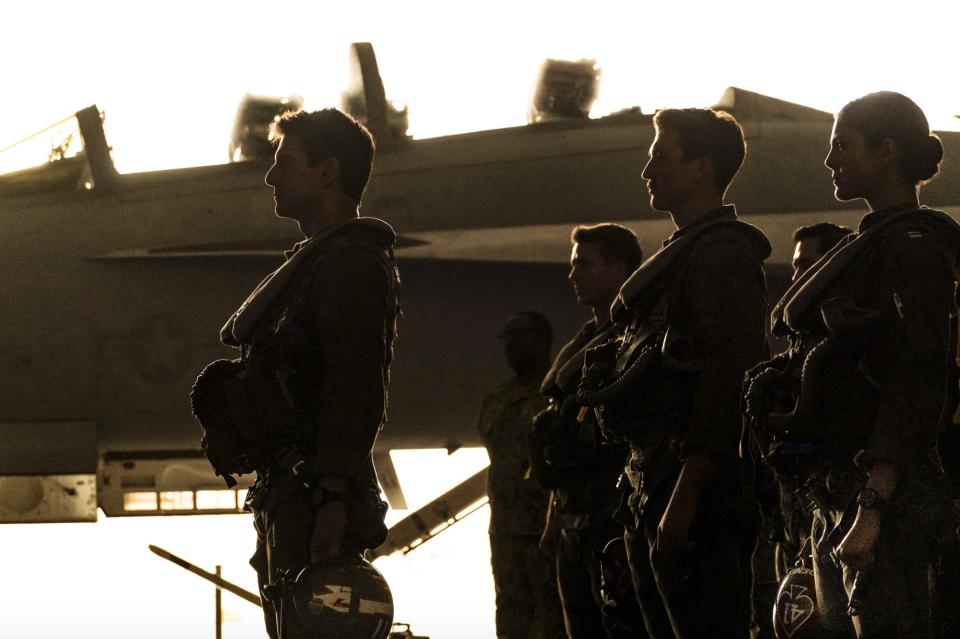‘Top Gun: Maverick’ Director Joseph Kosinski Answers All Our Burning Questions

- Oops!Something went wrong.Please try again later.
- Oops!Something went wrong.Please try again later.
- Oops!Something went wrong.Please try again later.
- Oops!Something went wrong.Please try again later.
- Oops!Something went wrong.Please try again later.
[Editor’s note: The following story contains spoilers for “Top Gun: Maverick.”]
It’s good to be Joseph Kosinski. To be clear, it’s good to be anyone associated with massive smash hit “Top Gun: Maverick,” but it’s especially sweet to be director Kosinski, whose last feature was Sony’s 2017 hotshot firefighter drama “Only the Brave.” Today, he’s the shepherd of Tom Cruise’s unlikely sequel, which has inspired not only huge box office returns but also incredible critical and fan response.
More from IndieWire
'Jurassic Park: Dominion' Could Lead to the First $1 Billion Box-Office Month Since 2019
How Andrew Bujalski Shot a Pandemic Movie with One Performer at a Time Over Course of Six Months
What could top that? We already know: Sci-fi thriller “Spiderhead” debuts on Netflix on June 17 (again starring his “Maverick” and “Brave” main man, Miles Teller) and Kosinski is now prepping the Apple-backed Formula 1 feature starring Brad Pitt.
As “Top Gun: Maverick” continues breaking box-office records and enjoying excellent reviews, the thoughtful and relatively soft-spoken Kosinski was game to answer all our burning questions, from cut scenes to how key cameos came together, who the “enemy” really is, how the film could have ended, and if sequel talk has already started.
This interview has been edited and condensed for clarity.
IndieWire: Joe, thank you so much for taking the time, but why are you not on a yacht popping champagne and celebrating with your family?
Joseph Kosinski: I have a sickness! I’m working. For me, I like to stay busy. I’m just thinking about the next one, “Spiderhead,” and then prepping the next one after that. What I enjoy doing is working. But I’m thrilled that “Top Gun: Maverick” is connecting with people and people are loving it, and seeing it multiple times. It’s everything we wanted and hoped for.
I definitely feel, having seen it with an audience four or five times — most of the times I’ve watched it I was alone in a big theater — but it is one of those movies that seems to play better the more people you’re with. And that’s really — it’s just fun. I’m so glad.
You tend to work with performers repeatedly, like Tom Cruise, Jennifer Connolly, and Charles Parnell, who are all in “Maverick,” but the film also stars Miles Teller, now in his third film of yours. I know casting Rooster was a complicated process, but what was it you saw in Miles that made you say, “This is my guy, this is our Rooster”?
In “Only the Brave,” he showed me what an incredible actor he is. That was a really, really challenging role, a challenging movie to make, and what was put on his shoulders emotionally to carry through that film was pretty epic. I was finishing that movie right when I flew to Paris to pitch Tom on the idea of this film so Miles was very much in my head, as was the whole kind of notion of this father-son relationship that is at the center of “Only the Brave,” even though it’s not a literal one. I felt like “Top Gun,” in many ways, could be the same thing on a big-movie blockbuster scale.

Paramount Pictures
Miles also has this amazing comedic side and I felt like he embodied a lot of the qualities that Anthony Edwards showed in the first film. I knew surrounding Tom with great dramatic actors would elevate everybody’s game. So I went into that first meeting with a picture of Miles and said, “I just worked with him. And I think he could be a great candidate for Rooster.”
Tom had a tremendous amount of respect for Miles even at that point, based on the work. There’s not a lot of guys Miles’ age that have put together the career and the choices that he’s done. Then we went through the audition process to make sure that we were really testing, crossing all the Ts and dotting the I’s. It was Miles and Glen [Powell] and Nick Hoult [vying for the role], and we did a dramatic scene and then the “Great Balls of Fire” scene. After that test, it was clear to all of us that Miles had the range to pull off everything this character needed to do.
You bring back a few legacy characters, particularly Val Kilmer as Iceman. One of the questions going into the film was how you would handle Val, given his current health condition. That’s handled so beautifully in the film; it seems to get a major response from people. How did the scene come together?
We spent a lot of time trying to figure out exactly what the best version of that scene was and how to pull it off. Obviously, the idea of Iceman being an important part of Maverick’s journey was something we all wanted, but didn’t know what Val’s health struggles were. This was five years ago, so this was before the documentary [“Val”].
[Producer] Jerry [Bruckheimer] and I met with Val. He came over to Jerry’s office and we sat down with him and just told him of our desire to figure out a way to get Iceman into the film. It was Val who came up with the idea that Iceman was sick too, so he could integrate into the story in a way that felt authentic and not something that we were trying to hide.
And then this notion of Iceman being a guardian angel for Maverick, from the moment they have that handshake at the end of the first film, this idea that Iceman would rise through the ranks as the ideal Navy officer, which he was. Even in the first film, he does everything. Iceman’s right in the first film. You know?
Yes! He is!
That’s why he goes through the ranks and becomes the U.S. commander of the Pacific fleet, which is essentially the highest position you can reach in the Navy. Whereas Maverick continues being Maverick, which means getting in trouble with his superior officers and more than anything just wanting to be in the air, where he belongs. Iceman makes sure that Maverick stays in the air over the course of his career, probably sending him on various dangerous missions and giving him the assignment out at China Lake testing X planes, when he ages out of the combat role.
This idea that Iceman is always looking out for his buddy was something we liked, and this idea that he also is aware of the tension or the broken relationship between Rooster and Maverick, and knows that Maverick will never really be able to move past it until he confronts it directly. The idea that Iceman brings in Maverick — not only to teach this mission, because he is one of the few who’s done it before, but also as a friend setting up Maverick to confront Rooster and make peace with their past — it just felt like a great way to integrate him into the film.

Paramount Pictures
The film pointedly does not mention the “enemy” by name, and there’s been lots of stories in which journalists try to figure out what the rogue nation is. At what point was it decided that the enemy would not be named, and what do you think of stories that posit to know who it “really” is?
The answer is it’s Canada. [laughs] We didn’t want to make this a movie about geopolitics. It’s a competition film. It’s a film about friendship, about sacrifice. It’s a rite-of-passage story. It’s all those things. It’s not a movie about the current state of world events which, by the way, have changed so much from when we made the film. If we had even decided [a country when we made it], it probably would’ve been outdated. The idea was always to make the enemy faceless and nameless.
That’s why in designing this third act, I put it in a world that was not identifiable as, I think, any of the places people are guessing. I liked the idea of putting it in a snowy region, so we shot it in the Cascade Mountains of Washington state to also invert the “Top Gun” aesthetic, to get away from the San Diego sunsets and flip it on its head. To me, that was an exciting way to really change the feeling of the film and make it feel like we were somewhere far away. I know people look at the F-14 [enemy fighter jets] or the fifth-generation fighter jets or the landscape and try to piece it together, but it really is nowhere.
The film seems to work even if you haven’t seen the original one, but you do intercut scenes from Tony Scott’s “Top Gun” that help explain certain relationships, including scenes that introduce us to Anthony Edwards’ Goose, Meg Ryan’s Carole, and Kelly McGillis’ Charlie, all of whom do not appear in “Maverick.” You show the group hanging at the bar and Goose’s iconic death scene. When did you decide to include those?
That was not in the script. That was something we discovered and I asked my editor to try when we were putting the bar scene together, where Maverick’s watching Rooster. I realized that Rooster is in the first movie, sitting on the piano with the cowboy hat. I wasn’t sure what it would feel like, cutting the first movie into this film.
Even from the first assembly, I saw how evocative it was and how emotional it was. You really see Maverick as a young man, holding Goose in his arms. The visual connection between Rooster and Goose is so strong, you just put it together.
We did a little bit of audience testing. What was a surprise to us was, whether or not you had seen the first film, people were rating the film exactly the same. There was no difference between “Top Gun” fans and non-“Top Gun” fans. I could have never anticipated that, but I do think people could potentially get more out of it if they’ve seen the first film. But people seem to enjoy it either way.

Paramount Pictures
The film obviously has many fans, but you have ticked off a small subset: the Manny Jacinto super fans.
I know! I feel terrible.
“Maverick” hones in on one group of fighter pilots trying out for this mission, including Rooster, Hangman, Phoenix, Bob, Payback, and Fanboy, but we briefly meet other candidates, including those played by Jacinto, Jack Schumacher, Jake Picking, Raymond Lee, and Kara Wang. When were they mostly cut out of the film? Or was that always the plan?
When we shot the film, everybody had lines, everybody had scenes, so it was all there in the script and in shooting it. And there are great scenes that are on the cutting-room floor. There’s a great scene in the infirmary with Cyclone [Jon Hamm] and Phoenix [Monica Barbero] and Bob [Lewis Pullman] after their accident. There’s great scene of Tom staring up at the old F-14 on the pole, outside the Navy base.
You just don’t have room to fit everything in. You need to be a mercenary, which is what I’ve learned from Tom and [editor] Eddie [Hamilton]. You end up throwing out stuff that you are sure, when you’re shooting it, will absolutely be in the movie. When you’re coming down to the final cut and focusing on the story you’re telling, stuff has to fall away for the good of the film.
Unfortunately for Manny, Kara, Jake, Raymond, and Jack, their lines didn’t make it into the final film. It has nothing to do with their performance or their abilities at all; it only has to do with the story of the film and trying to make the best version.

Paramount Pictures
The film’s final scene returns Maverick to his desert hanger, joined by Rooster, and then Penny and Amelia, but the film already had a few “endings” already. Was this version always the original ending?
I actually shot a version where Phoenix was there too, and Phoenix is talking to Amelia about airplanes, and they’re looking at plane models and having this nice moment together. We had versions where Hondo [Bashir Salahuddin] was there, so it was more like a big family. At the end, we narrowed it down to just Rooster and Amelia.
At first, Maverick goes to the bar and Penny’s [Connolly] not there, which was a scene we played with both in and out [of the film]. I’m so glad we put it in, because it’s a great way to reveal Penny at the end of the film with Maverick. It just felt like the right ending. We open the film in the hanger and Maverick is alone, and we end with him in the hanger and he’s surrounded by family, a new family. That’s the journey we wanted to take Maverick on.
You can’t tell me that Paramount is not already champing at the bit for another sequel.
It took 36 years for Tom to agree to do this one! [laughs] It’s up to him. He’s the one that has to be convinced. That’s how this project started, with Jerry and I going to Paris to talk Tom into it. It’s all about story. It’s all about emotion. If we can figure out a way, a journey for Maverick to go back and be with these young pilots and figure something out, maybe it could happen. I think for now, we should just enjoy that we got this one.
A Paramount Pictures release, “Top Gun: Maverick” is in theaters now. Netflix’s “Spiderhead” hits the streamer on Friday, June 17.
Best of IndieWire
New Movies: Release Calendar for June 10, Plus Where to Watch the Latest Films
Tom Cruise's 15 Best Performances, from Maverick to Frank T.J. Mackey
Sign up for Indiewire's Newsletter. For the latest news, follow us on Facebook, Twitter, and Instagram.

